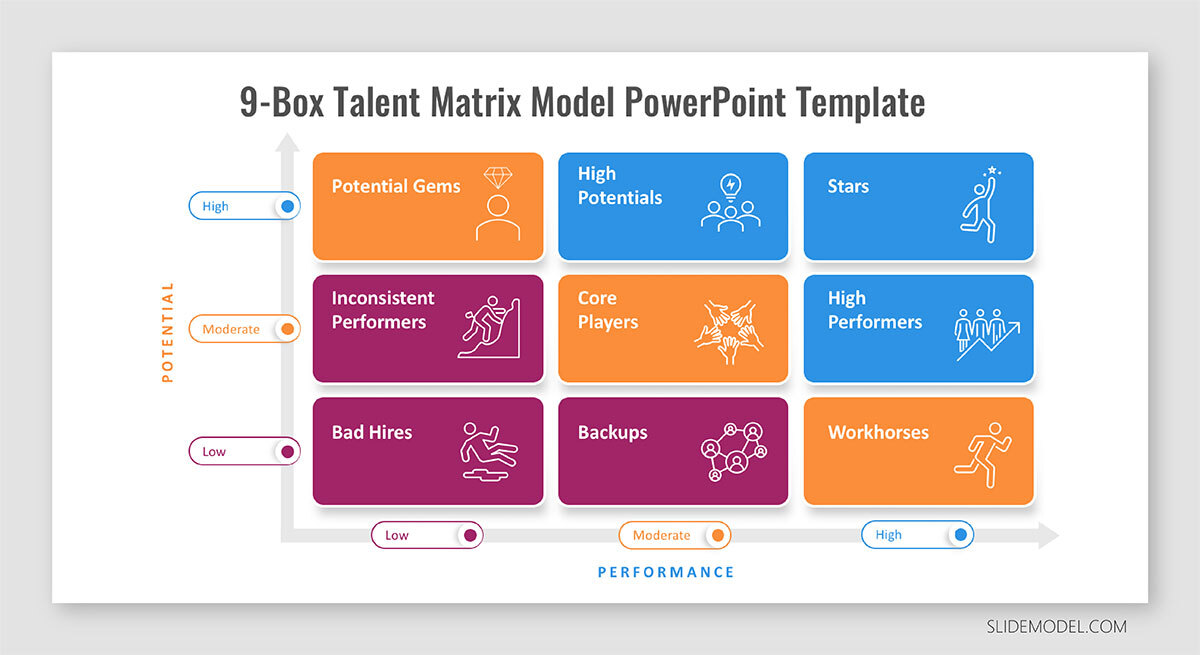Understanding the 9 Box Model in Human Resource Management
In the realm of Human Resource Management (HRM), the 9 Box Model has emerged as a powerful tool for evaluating and developing talent within an organization. Also known as the Performance-Potential Matrix, the 9 Box Model is designed to assess employees based on two critical dimensions: their current performance and their future potential.
By plotting employees on a matrix with nine boxes, HR professionals can gain valuable insights into their workforce’s strengths, weaknesses, and growth opportunities. Let’s delve deeper into how the 9 Box Model is used and why it holds significant importance in employee evaluation.

What is the structure of the 9 Box Model?
The 9 Box Model consists of a grid with three levels of performance (low, moderate, and high) and three levels of potential (low, moderate, and high). Each box represents a combination of an employee’s current performance and potential.
For example, employees with high performance and high potential are placed in the top-right box, indicating their readiness for leadership roles and strategic initiatives. Conversely, those with low performance and low potential are positioned in the bottom-left box, signifying the need for immediate intervention or consideration of alternative career paths.
Why should you use the 9 Box Model?
The primary application of the 9 Box Model lies in succession planning, talent development, and performance management. By categorizing employees into different boxes, HR professionals can identify high-potential individuals who should be groomed for leadership positions and offer targeted development programs for those with untapped potential.
Moreover, the model helps in recognizing top performers who should be rewarded and retained, while also pinpointing employees who may be struggling and require coaching or additional support. This systematic approach enables HR teams to align the right talent with the right roles and proactively address skill gaps and workforce planning needs.
Importance in employee evaluation
The 9 Box Model facilitates a fair and objective evaluation process by focusing on both performance and potential, ensuring that assessments are not solely based on past achievements but also consider future capabilities.
This holistic view of employees allows organizations to foster a culture of continuous improvement and growth, motivating individuals to develop their skills and contribute effectively to the company’s success.
Moreover, the 9 Box Model aids in identifying employees who might be overlooked in traditional performance evaluations but possess the potential to excel in higher-level positions, thus fostering a more inclusive and diverse talent pipeline.
HR software can help with the evaluation of employee performance
HR software can significantly aid in the implementation and management of the 9 Box Model. These specialized tools offer automated and user-friendly features for performance and potential assessments, making it easier for HR professionals to evaluate employees objectively. By centralizing employee data and performance metrics, HR software enables efficient tracking and plotting of individuals on the 9 Box grid.
Sloneek, one of the leaders in the HR industry, offers powerful tools for employee evaluation. You may easily prepare questionnaires, skill sets and performance models which all give you a great basis for implementing your 9 Box Model grid



